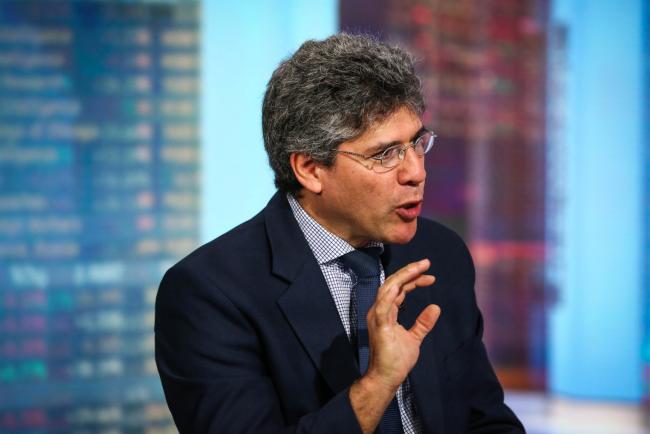(Bloomberg) -- One of the world’s biggest dollar bulls is sticking to his guns as the U.S. economy powers ahead and dangles some of the highest interest rates versus Europe in history.
Wall Street’s “America First” playbook in 2019 will pack more punch, boosting the greenback along the way, according to David Bloom at HSBC.
“The market is perpetually looking for a U.S. slowdown, and it’s just not happening,” Bloom said in an interview in Madrid. “Why wouldn’t you buy the dollar? Even if the world goes risk-off, and the Fed has to cut rates, the dollar -- and the yen -- will win.”
Wall Street banks are divided on the direction of the dollar for 2019 after its surprising strength this year upended investment strategies across the globe. Morgan Stanley’s Global Head of FX Strategy Hans Redeker said the dollar has peaked, pointing to investment flows and what he sees as a slowing economy. Goldman Sachs. also says it will be tough for the greenback to gain. At HSBC, however, the chief currency strategist is seeing vindication for his bullish stance held since April, after the dollar advanced more than 6 percent against the euro.
Bloom reckons the dollar will strengthen to $1.10 per euro by the end of next year -- a 3 percent upside from current levels for the world’s most-traded pair. That’s a weaker euro forecast than any of the 19 estimates tracked by Bloomberg. Bloom is also more dollar-bullish than consensus across a slew of FX pairs, including the South African rand.
Investors are set to gobble up U.S. assets anchored by a robust business cycle that’s sustaining rate hikes, while haven demand may fuel the greenback should traders turn skittish, he said.
Rooting for Euro
Data this week underscore the uphill battle for traders rooting for a rebound in the euro. German output contracted in the third quarter while investors surveyed by ZEW showed little optimism about the prospect of a pick-up -- spurring 10-year German real yields to 2018 lows.
“It is this theme of ‘divergence’ between the U.S. and everywhere else -- now evident since the first quarter of 2018 and reinforced in the recent data -- that has driven our strong, steady view for the dollar,” Thierry Wizman and Gareth Berry, strategists at Macquarie Group Ltd., wrote in a note this week.
Meanwhile, inflation-adjusted U.S. rates over Europe are at some of the highest levels in history, with nominal yields outpacing other Group of 10 nations. All that has helped the dollar rise 4 percent against 10 of its peers in 2018.
The dollar has given the Swiss franc a run for its money this year, benefiting from haven demand during risk-off market trading -- a trend that could intensify in 2019, according to the HSBC strategist.
Third Scenario
Only in a third scenario, where the Fed calls off further hikes, does Bloom see the dollar weakening. “You’ve got a dice with three sides, and only one side loses,” he said.
While arch-dollar bears at Morgan Stanley say weaker equity and credit prices give reason to pare U.S. currency exposures, optimism in the derivatives market has swelled over the past week.
Traders in three-month options have increased their dollar bets versus a basket of six major currencies, risk reversals show. The premium for calls over puts has pulled to within 10 basis points of the 2018 closing high seen mid-August, according to data compiled by Bloomberg.
“No one is more bullish,” Bloom concluded.
